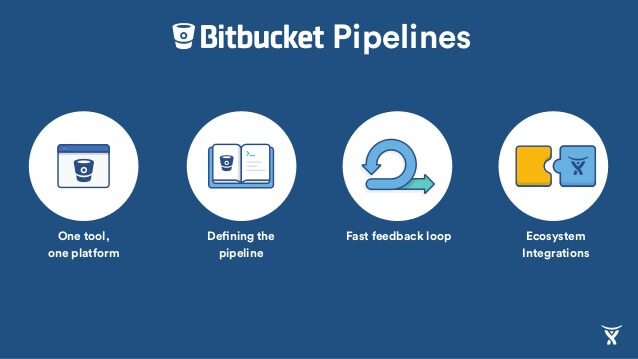CloudEndure – Troubleshooting Tips
-
 Shibin John
Shibin John
- Aws, Cloud endure, Cloud migration
- September 11, 2021
CloudEndure is an AWS migration tool, which transform on-premise physical or virtual servers to AWS standard instance. It’s an agent based tool. AWS has well documented it. However, some are missing. Here are some troubleshooting tips, which may be helpful and are not really found anywhere in the web.
Refer to
[Network Requirements](https://docs.cloudendure.com/Content/Preparing_Your_Environments/Network_Requirements/Network_Requirements.htm)
documentation
Tip 1 – Required URLs
Some organizations are having very strict policies and rules. E.g. Financial institutions. They might be using proxies to communicate to outside and that too may require to whitelist certain URLs for effective communication. If a URL whitelisting requires, as per the documentation, you can find that console.cloudendure.com is most important one. It might have been whitelisted as that’s mandatory for the communication. CloudEndure have an option to overcome such certain downloads by using VPC endpoints. This is by-default points to console.cloudendure.com . However, there is a hidden item that’s required to whitelist. It’s EC2 endpoints. From staging area to EC2 communication for effective snapshot creation, you must also need to white list ec2.region.amazonaws.com via https URL. Replace region with your suitable region.
Tip 2 – Clean Uninstallation
Easiest way to uninstall agent from a source or destination server is via CloudEndure user console. Refer to agent uninstallation documentation for more details.
After source machine successfully cutover to target environment, when you remove machine from user console, it will remove agent from target machine. Source machine will not shutdown automatically nor remove agents. This is a manual task.
On a Linux machine, agent uninstallation works pretty good way without leaving a trace. However, Windows machines are always having some hidden issues. Notably on Windows 2016 and 2019 servers.
After agent uninstallation, you must ensure that ce_driver and ce_filter_driver get removed from the machine. If any or both of these not removed, it will cause system crash.
Run the following command to validate, if it is still in running state or not.
c:\Temp>sc query ce_driver
SERVICE_NAME: ce_driver
TYPE : 1 KERNEL_DRIVER
STATE : 1 STOPPED
WIN32_EXIT_CODE : 1077 (0x435)
SERVICE_EXIT_CODE : 0 (0x0)
CHECKPOINT : 0x0
WAIT_HINT : 0x0
c:\Temp>sc query ce_filter_driver
SERVICE_NAME: ce_filter_driver
TYPE : 1 KERNEL_DRIVER
STATE : 4 RUNNING
(STOPPABLE, NOT_PAUSABLE, IGNORES_SHUTDOWN)
WIN32_EXIT_CODE : 0 (0x0)
SERVICE_EXIT_CODE : 0 (0x0)
CHECKPOINT : 0x0
WAIT_HINT : 0x0
As you can see from above output, one is in stopped state and other in running state. But none of them are removed from kernel. Remove them manually by executing following command.
sc delete ce_driver
sc delete ce_filter_driver
For ce_driver , you might see it as deleted immediately if the state of that driver is STOPPED . However the other one, if it is running you will see following error:
c:\Temp>sc delete ce_filter_driver
[SC] DeleteService FAILED 1072:
The specified service has been marked for deletion.
The above message says, it is marked for deletion, but not deleted. Run query again to make sure it is still in running state.
c:\Temp>sc query ce_filter_driver
SERVICE_NAME: ce_filter_driver
TYPE : 1 KERNEL_DRIVER
STATE : 4 RUNNING
(STOPPABLE, NOT_PAUSABLE, IGNORES_SHUTDOWN)
WIN32_EXIT_CODE : 0 (0x0)
SERVICE_EXIT_CODE : 0 (0x0)
CHECKPOINT : 0x0
WAIT_HINT : 0x0
You need to reboot your machine to get rid off this. Although documentations never say a reboot require for the agent uninstallation, a clean uninstallation to get rid off such residual processes requires a reboot. Otherwise it will be harmful to your system, especially if you try to re-install.
Another notable issue with this is, if you removed machine from console and that didn’t uninstall agent form the source properly and you managed to install again, triggering a replication can cause system crash with message ce_filter_driver as cause of crash.

Shibin John
Project Technical Lead at DXC Technology
Note
Disclaimer: The views expressed and the content shared in all published articles on this website are solely those of the respective authors, and they do not necessarily reflect the views of the author’s employer or the techbeatly platform. We strive to ensure the accuracy and validity of the content published on our website. However, we cannot guarantee the absolute correctness or completeness of the information provided. It is the responsibility of the readers and users of this website to verify the accuracy and appropriateness of any information or opinions expressed within the articles. If you come across any content that you believe to be incorrect or invalid, please contact us immediately so that we can address the issue promptly.
![AWS Quick Start Event – August 2018 [Online]](/images/tb-uploads/2018/08/aws-quick-start-event-august-2018-online.png)

